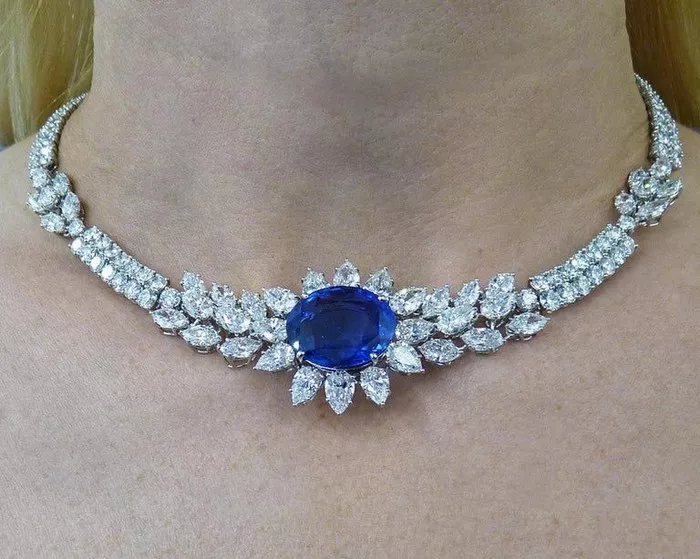Selecting a pendant for a necklace involves more than just choosing a design or material; it also requires careful consideration of its physical dimensions, including thickness. The thickness of a pendant can significantly impact its aesthetic appeal, durability, and how it complements the wearer’s style and comfort. This article aims to provide a thorough exploration of factors to consider when determining the appropriate thickness for your pendant, offering practical insights and considerations to guide your decision-making process.
Understanding Pendant Thickness: Dimensions and Measurements
Pendant thickness refers to the distance between the pendant’s front (face) and back (reverse side). It is typically measured in millimeters (mm) and can vary widely depending on the design, materials used, and intended style. The thickness of a pendant contributes to its overall look and feel, affecting factors such as weight, durability, and visual impact when worn.
Factors to Consider When Choosing Pendant Thickness
Design and Style Considerations
The design of the pendant plays a crucial role in determining its ideal thickness. For intricate designs or detailed engravings, a thicker pendant may be necessary to accommodate the depth of the design elements without compromising structural integrity. Conversely, minimalist or delicate pendants often benefit from thinner profiles to maintain a lightweight and subtle appearance.
Consider the aesthetic goals you have for your pendant. Are you aiming for a bold statement piece that stands out, or do you prefer a more understated and refined look? The thickness of the pendant should align with your style preferences and complement the overall design aesthetic.
See Also: What Pendant Brings Luck?
Material Selection and Weight
The material from which the pendant is crafted also influences its optimal thickness. Different materials have varying densities and weights, which can impact how thick the pendant should be to achieve a balanced look and comfortable wear. For example:
Metal Pendants: Solid metals like gold, silver, or platinum are often used for pendants due to their durability and aesthetic appeal. The thickness of metal pendants should be sufficient to provide strength and prevent bending or warping over time. Thicker metal pendants may also feel more substantial and luxurious, while thinner ones offer a sleeker, more lightweight option.
Gemstone Pendants: Pendants featuring gemstones or crystals require careful consideration of thickness to ensure adequate support and protection for the stones. Thicker settings can provide more security for gemstones, reducing the risk of damage or loss, particularly for larger or more fragile stones.
Alternative Materials: Pendants made from alternative materials such as wood, acrylic, or ceramic offer unique aesthetic qualities but may require different thickness considerations. These materials often allow for more creative and lightweight designs, with thickness tailored to enhance visual impact and structural integrity.
Durability and Longevity
The thickness of a pendant directly impacts its durability and longevity. A thicker pendant generally offers greater resistance to wear and tear, making it suitable for everyday wear without significant risk of damage. Thicker pendants are less prone to bending or denting compared to thinner counterparts, especially in materials like metals that can deform under pressure.
Consider your lifestyle and how you intend to wear the pendant. If you lead an active lifestyle or plan to wear the pendant frequently, opting for a thicker design can ensure it withstands daily activities and retains its appearance over time. Conversely, occasional wear or special occasion pendants may afford more flexibility in thickness depending on the desired aesthetic and comfort.
Comfort and Wearability
The thickness of a pendant also influences its comfort when worn. Thicker pendants may feel more substantial on the neck, which can be desirable for those seeking a bold or noticeable accessory. However, overly thick pendants can feel cumbersome or uncomfortable, particularly if worn for extended periods or in warmer climates.
Strike a balance between visual appeal and practical comfort. Consider how the pendant sits on the neckline and whether its thickness enhances or detracts from overall wearability. Thinner pendants may offer a lighter, more comfortable option for everyday wear, while thicker designs can make a stronger fashion statement when chosen thoughtfully.
Necklace Compatibility
Lastly, when choosing pendant thickness, it’s essential to consider how it integrates with the necklace chain or cord. The pendant should be compatible with the chain’s weight-bearing capacity and clasp size to ensure a secure fit and balanced appearance. Thicker pendants may require stronger or thicker chains to support their weight adequately, while thinner pendants offer more versatility in chain selection.
Evaluate the relationship between pendant thickness and necklace compatibility to achieve a harmonious balance in your jewelry ensemble. Experiment with different chain styles and pendant sizes to determine the optimal combination that enhances both aesthetic appeal and functional wearability.
Conclusion
Choosing the right thickness for your pendant involves careful consideration of design preferences, material characteristics, durability requirements, comfort factors, and necklace compatibility. By understanding these factors and their interplay, you can make an informed decision that enhances the visual appeal, durability, and comfort of your pendant jewelry.
Whether you opt for a thicker pendant to make a bold statement or prefer a thinner profile for subtle elegance, the thickness should align with your personal style and practical considerations. Ultimately, selecting the ideal pendant thickness enhances not only the aesthetic appeal of your jewelry but also ensures long-term satisfaction and enjoyment as you adorn yourself with a piece that reflects your unique personality and tastes.

